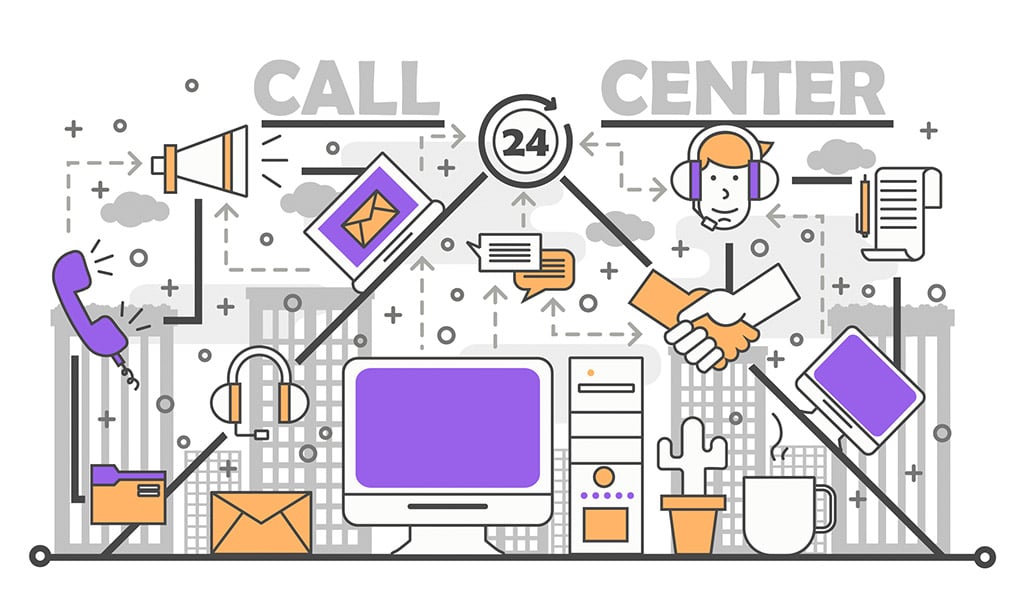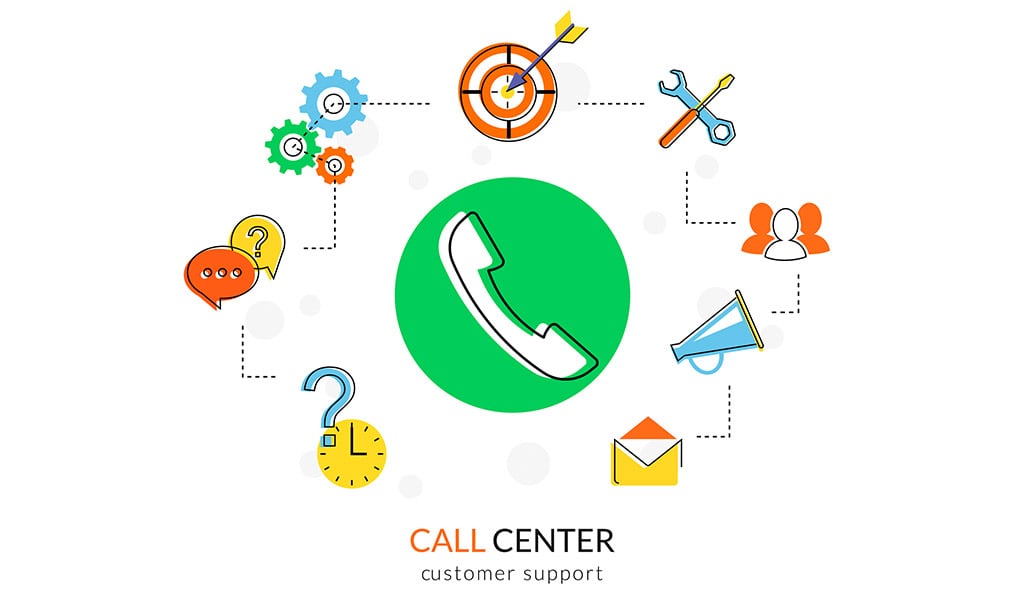
Every call center will experience spikes in calls at different points throughout the year. Sometimes this is expected, like at Christmas when spending goes up. The same is true if you have a seasonal business like a travel company focused on Ski Resorts. Planning for expected spikes in call volume is much easier. You can interview and hire new staff well in advance. You can be ready for extended hours.
However, unexpected spikes are much more difficult to manage without the right call center structure. These spikes can happen for several reasons, but they are always more difficult to predict and prepare for. For example, the current situation we find ourselves in with the Coronavirus pandemic. Six months ago, no one could have predicted that we would experience such a radical change in how we work or how we live our lives. We have never experienced a pandemic of this scale or one that has had such far-reaching impacts. Many companies are experiencing a spike in calls right now as customers have more questions than ever before. Other spikes in calls can come from technical issues with services, websites, or apps, or from external factors.
Whatever the reason, you have to be as prepared as possible! Customers don’t care that you couldn’t foresee a spike in calls. A single customer isn’t looking at the bigger picture and thinking about the pressures your call center is under. They are calling because they have a problem and they want that problem solved immediately! For them to come away from the call feeling satisfied, they need to have a great experience. This means they feel appreciated, validated, listened to, and that their issue is resolved. All of this is made harder if the customer has to wait a long time to talk to an agent. For every minute you keep customers waiting, the more frustrated they become. This is a recipe for disaster, especially if you’re a heavily customer-focused company that wants to stand out from your competitors. So how do you prepare for call spikes? How do you make sure you’re in the best position to deliver a great experience to your customers no matter the call volume your call center is experiencing? We have the answers. Let’s take a look!
Digital Instant Communications
One of the surest ways to take the pressure off your call center agents is to provide other avenues of communication. Calls are great! It’s a tried and tested method of customer service that is sure to survive the AI age. There will always be customers who want to call and agent and hear a human voice. Some issues are just easier to solve when you have the freedom to convey complex issues in an unhindered way. Want to unload a stream of sentences to quickly describe your problem? Then a call is the best option.
However, there are equally lots of situations where digital instant messaging like WhatsApp, Facebook Messenger, or Live chat are more appropriate. Customer service over the phone is extremely restrictive for agents. They can only talk to one customer at a time and must give them their full attention. With instant messaging, agents can talk to multiple agents all at once and close open tickets are at a more rapid rate. WhatsApp has over 1.5 billion monthly active users! This means you can connect with your customers using a medium they are already using and are very familiar with.
The sooner you set up your digital instant communication channels, the more prepared you’ll be for better handling a spike in customer service ticket volumes.

Other Text Based Communications
SMS and email are other great options for text-based communication. These forms of communication have existed since the dawn of mobile phones and the internet. You can guarantee that all of your customers are familiar with these communication mediums, so you don’t have to worry about customers being confused by the process and opting to call instead.
Like with digital instant messaging, the major benefit of these text-based communication mediums is that they divert attention away from your call agents. Despite being traditional, these forms of communication are still very popular in 2020. One study found that 57% of customers would rather talk to companies over email or social media than use voice-based customer service.
Another benefit of text-based communications is that you can keep a record of all customer communications and utilize data science to unlock insights into your customers. Sometimes we think a spike is unexpected when actually it might not be. For example, maybe you always get a spike in calls when you make changes to your website. Are the changes you make confusing for customers? Do you need to tweak them? Looking at the data can help you discover these trends. It’s much easier to analyze text data than voice-based data.
More Agents Isn’t the Answer, Omnichannel Is!
This is a common problem that all people are guilty of. Have a problem? Just throw more of the same resources at it and hope for the best. This approach is completely understandable because it follows a logical pattern. If you have too many calls for your agents to handle, then you need more agents, right? No, not necessarily. Sometimes we need to take a step back and ask if we can work smarter. Hiring more agents is expensive and time-consuming. Sometimes the solution is more simple but requires a new way of working.
Agents will be overwhelmed with calls if customers have limited communication options. If you can only call a company, then guess what? you’re going to call! By offering more communication options you can handle a spike in calls without increasing the number of agents you have in your call center. Optimization and multitasking are friends of successful businesses!
The same is true for choosing the right technology. Omnichannel platforms are easier to use, more optimized, more streamlined, and allow for more effective working. Agents won’t be hindered by ineffective or clunky tech that was created for a different time. Omnichannel platforms are also highly scalable. They are suitable for businesses of all sizes and can grow as you grow.
Get More Done with Automation!
Chatbots are a great tool for businesses for both sales and customer service! Chatbots are growing in popularity every year and are more intelligent than ever. According to Microsoft, 30% of American customers rate chatbots as “very effective”. This is only set to increase as automation technology advances.
Sales chatbots can generate high quality leads for the sales team and lead to higher profits. Customer service chatbots are excellent at answering simple questions or completing simple tasks for customers. This diverts calls away from agents whose time is better spent dealing with complex problems.
Automation is the future. It’s all about working smarter and making repetitive or simple tasks automated so people are freed up to focus on other tasks. Companies that don’t automate risk being left behind and losing customers to more forward-thinking companies.
When it comes to a spike in customer complaints, you can set up your chatbot to provide quick information to customers about the situation and what you are doing to address it. You can give them detailed instructions about how best to contact the company, so they get the most effective solution in the best time. Without utilizing automation, there’s no way to differentiate calls or control how many calls come in.
It’s also a great idea to automate as many business processes as possible. The goal should be to free up your agents so they only have to focus on calls and not on manual admin tasks or other tasks. Any time an agent spends completing other activities, it’s time they could be spending talking to a disgruntled customer and turning their day around! Here are some examples of business processes you can automate.
- Automated file transfers.
- Automated report generation.
- Automated ticket resolution emails.
- Automated databases for orders.
- Email automation – Filter inboxes, tagged emails, ticket distribution, task assignment, spam filters.
- HR onboarding.
- Customer onboarding – Sending welcome emails, product instructions, current offers.

Agent Training
Another way to put yourself in the best position to handle a spike in customer interaction is to train your agents to be experts in their field.
Tips for Reducing Average Handling Time
Average handling time is a critical metric in a call center. You will be able to resolve more customer calls by reducing average handling time and resolving issues quicker. This is a careful balance because you don’t want customers to feel rushed and like you are trying to send them away without giving them the attention they deserve. Here are some tips to reduce average handling time:
- Record all calls – Recording calls grants you a great way of assessing your strengths and weaknesses. Calls can be used in agent training and to look for ways to improve.
- Coach agents in how to progress a call – Agents need to know how to follow a customer service formula and recognize what part of the formula they are focusing on at any point in the call. They need to know how to advance the situation from listening to a problem to quickly providing a solution and then wrapping up the call.
- Streamline processes – Business processes should be as streamlined as possible so that agents can complete tasks with extreme ease.
- User-friendly tech – The software and hardware agents are using should be easy to use and require little effort. The tech should support the agents, not hinder them.
Agents should also be trained in how to advise different communication options to customers. The message must be worded carefully so it doesn’t come across like the agent is saying “you chose the wrong communication channel”. Instead, at the end of the call, the agent can say “Thanks for calling, it was great talking to you today. If you need anything else you can call again or use our Live Chat, SMS, or Email customer service channels.”
Forecasting
Try your best to collect call volume data and analyze it to find the reasons behind spikes. Remember, the best way to prepare for the future is to have a plan. It might be tempting to blame spikes on external factors that you can’t control, but you are very rarely powerless in these situations. Take a look at how frequent your spikes are as your business grows. Do you get several spikes a day? A month? A few major spikes every year? Expect to get spikes in call volumes. Where there is an obvious link, forecast for this and prepare agents to work longer hours, use the tips above, and even hire more agents if necessary.